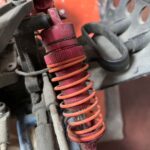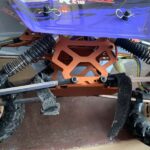Tamiya Hornet Vs. Grasshopper (Which Is Better)
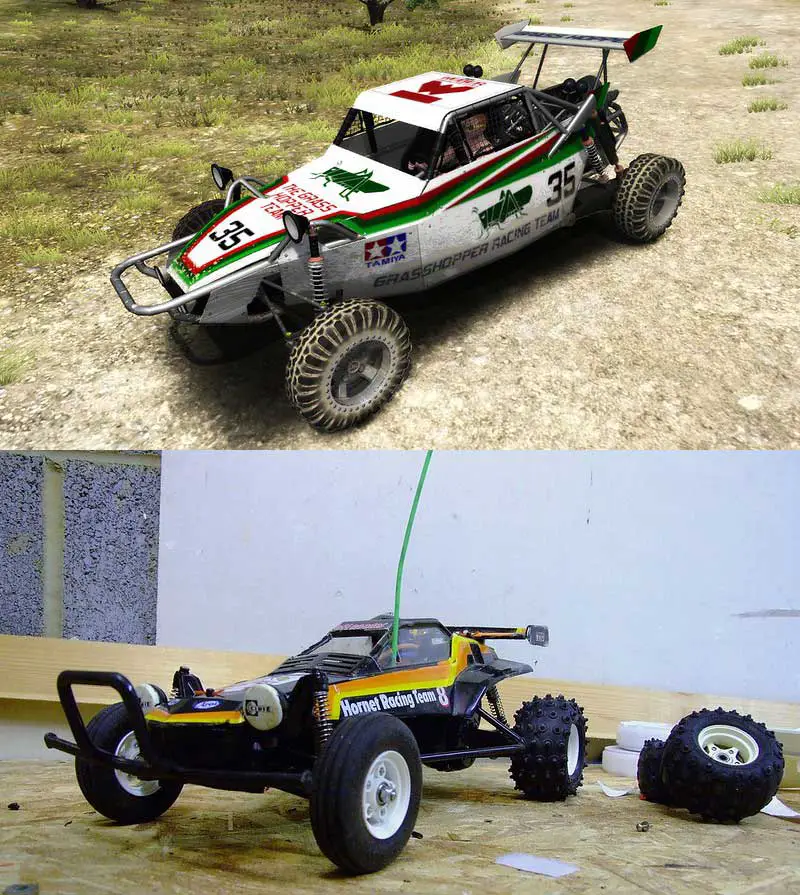
Over the years, Tamiya, one of the leading hobby-grade RC vehicles, has produced several notable product lines.
The Hornet and Grasshopper are two of Tamiya’s oldest two-wheel RC buggy produced in 1984. They are both fast and rugged and even share 90% similarities in their components.
If you are looking to get one of these old hobby-grade vehicles, you need to be able to differentiate them.
The main difference between the Hornet and the Grasshopper
The Hornet is an upgraded version of the Grasshopper. However, the Hornet and Grasshopper are similar in the fact that they are both two-wheel-drive off-road buggies. They also share identical features like the bathtub chassis.
However, the main differences between these models are in their body material, motor, shocks, and suspension.
- The Hornet uses a 540-type motor while the Grasshopper uses a 380 motor, making them less fast than the Hornet.
- The shell of the Grasshopper is designed using ABS plastic as opposed to the polycarbonate body of the Hornet.
- In terms of the suspension, the Hornet used a swaying rear axle design, while the Grasshopper used a simple friction shock system that pivoted up and down.
- Apart from this, the Hornet came with oil-filled shocks, while the shocks on the Grasshopper were designed as just simple springs.
Read more: Is Tamiya Good Quality? | We’ve Got One Giant on The Table
Comparison Between Tamiya Hornet and The Grasshopper
| Hornet | Grasshopper | |
| Price at release date | 9800 Yen | 7400 Yen |
| Suspension Type | Primitive Suspension | Pivoting Rear Axle with a Springy Feel |
| Motor | Mabuchi RS-540S motor | Mabuchi 380 motor |
| Shocks | 2 Rear Hydraulic Shocks | Simple Spring Shocks |
| Body material | Lexan(polycarbonate) Body | High Impact Styrol ABS Plastic |
| Speed | 43.4Mph | 11Mph |
| Batteries | 1 x 7.2volt + optional 4 x AA (Car)8 x AA (Transmitter) | 1 x 7.2volt or 1 x 6volt (Car)Optional 4 x AA (Car)8 x AA (Transmitter) |
| Size | Length-400mWidth-230mmHeight-150mm | Length-389mmWidth-223mmHeight-135mm |
| Weight | 874g | 830g |
| Rear tires | Pin Spikes Rear Tires | Shovel Style Rear Tires |
Tamiya grasshopper and Hornet Differences Explained
The Grasshopper
One of the popular classics by Tamiya in the 1980s, this Grasshopper kit dominated the RC market and even inspired other copies from other brands.
Released on 4th May 1984, the Grasshopper had a bright green (grass-like) striping and angular body that gave it a natural aesthetic look of a Grasshopper insect. As with the Hornet, the Grasshopper was a 2WD 1/10 scale off-road buggy Baja that was rugged. However, it was one of Tamiya’s most affordable buggy at 7400 Yen when released.
The car came with a Mabuchi 380 motor which meant it was among one of Tamiya’s slower models at that time, yet it offered reasonable speed and longer run time because of the ABS plastic bathtub chassis it utilized. Initially, the kit came standard with an ESC fitted for smaller 6volt (5 cells) battery packs, but with time, the 7.2-volt (6 cells) batteries became the standard type used in the Grasshopper.
Since then, the Grasshopper Kit has undergone a remake twice, in 2005 and 2018, with the new model looking different from the original.
Tamiya Hornet
The Hornet, Tamiya’s 45th model produced, was one of Tamiya’s iconic and best-selling RC vehicles ever made.
Released on 9th October 1984, the Hornet was a 2WD off-road RC buggy with a realistic design of a Hornet insect from the black and yellow-orange-red colored body. This Tamiya model was fast, lighter, and rugged than the Grasshopper due to its Lexan (polycarbonate) shell. The Hornet came equipped with a rigid bathtub chassis, black plastic wheel bearing, rear suspension, and a big flexible front bumper that made them durable.
Since 1984, Tamiya has produced three different Hornet models making the Hornet one of the longest-running Tamiya kits. In 2004, Tamiya produced a remake of the Hornet, totally different from the original.
In 2006, the hobby-grade manufacturers also made the Tamtech-Gear Hornet, a smaller scale, and used an entirely different design from the original Hornet.
In 2019, Tamiya produced the Comical Hornet, a caricature style Hornet.
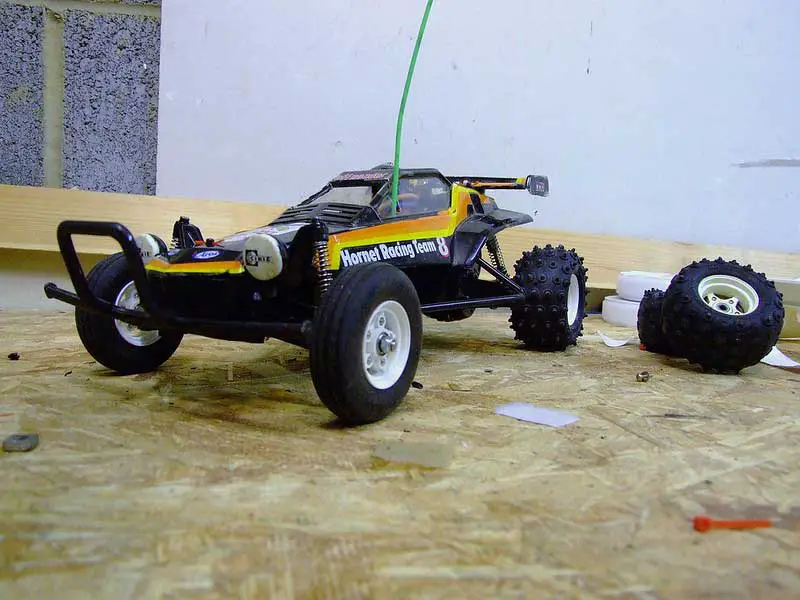

Is the Tamiya Hornet good?
Remember, the Hornet is an upgraded version of the Grasshopper; thus, it is definitely good. It comes with all the fantastic electronic features of the Grasshopper but with an upgraded motor, shock, suspension, and body material to ensure more durability and speed.
The only downside to the Hornet is that it doesn’t have a longer runtime like the Grasshopper.
How fast is the Tamiya Hornet?
Since the Hornet is an upgrade from the Grasshopper, it’s no surprise that they are incredibly faster than the Grasshopper since they can reach speeds as high as 43.4Mph.
How fast is the Tamiya Grasshopper?
The Tamiya Grasshopper uses one of the slowest Tamiya motors, the Mabuchi 380-type motor.
For this reason, they can only reach speeds as high as 11Mph.
Read more: What is the fastest Tamiya RC car (faster than you think)
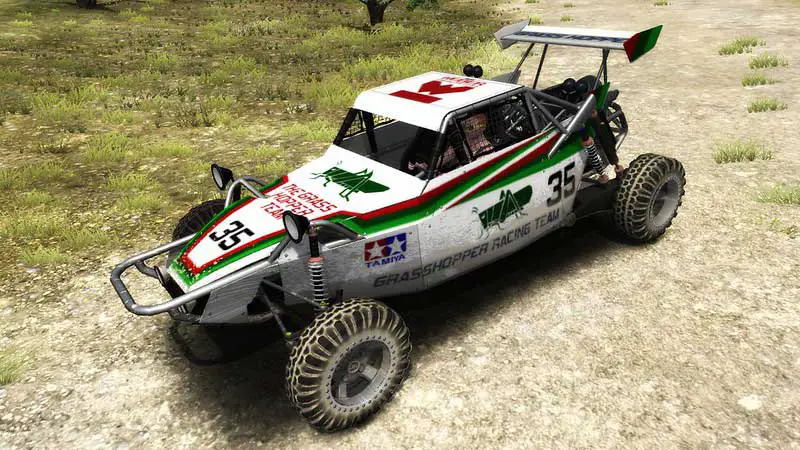

Which is better, Tamiya Hornet or Grasshopper
The Tamiya Hornet and Grasshopper are two of Tamiya’s oldest RC Kit models that have made the Tamiya a famous brand making these models a great classic choice.
However, when it comes to speed and durability, the Hornet is the better option since it has better suspension, motor, and shocks.
Conclusion
Whether you are looking to buy a Tamiya Hornet and Grasshopper, understand that these models are undoubtedly old RC vehicles, but that does not make them outdated. They still have some excellent and improved features that today rival most modern RC vehicles. In fact, these models come with durable, long-lasting, and functional parts. The only difference that makes them stand out is their motor, body material, shocks, and suspension.



